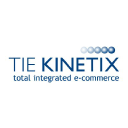
FMP

TIE Kinetix N.V.
TIE.AS
EURONEXT
Inactive Equity
TIE Kinetix N.V. develops, distributes, and sells software solutions in the Netherlands, the United States, Germany, France, and internationally. The company offers digital supply chain solutions; and electronic document exchange and data integration solutions, such as EDI-2-FLOW, PDF-2-FLOW, PORTAL-2-FLOW, and E-Archiving. It offers electronic data interchange (EDI) software as a service for exchanging business documents electronically for companies, governmental institutions, and suppliers. In addition, the company offers value added network services, which enables trading partners to communicate and exchange business documents in various formats real-time using various communication protocols; electronic invoicing solutions; and consultancy services. Further, it provides FLOW Partner Automation platform that combines supply chain integration solutions, such as EDI/XML, PDF conversion, and supplier portal, as well as offers analytics data and dashboards for users. The company offers its solutions to business services, industry and home improvement, telecom, insurance, food industry and food retail, non-food, consumer electronics, transport and logistics, office supplies, automotive, medical, and others markets directly, as well as through a network of distribution partners. TIE Kinetix N.V. was founded in 1987 and is headquartered in Breukelen, the Netherlands.
31.8 EUR
0.2 (0.629%)

EBIT (Operating profit)(Operating income)(Operating earning) = GROSS MARGIN (REVENUE - COGS) - OPERATING EXPENSES (R&D, RENT) EBIT = (1*) (2*) -> operating process (leverage -> interest -> EBT -> tax -> net Income) EBITDA = GROSS MARGIN (REVENUE - COGS) - OPERATING EXPENSES (R&D, RENT) + Depreciation + amortization EBITA = (1*) (2*) (3*) (4*) company's CURRENT operating profitability (i.e., how much profit it makes with its present assets and its operations on the products it produces and sells, as well as providing a proxy for cash flow) -> performance of a company (1*) discounting the effects of interest payments from different forms of financing (by ignoring interest payments), (2*) political jurisdictions (by ignoring tax), collections of assets (by ignoring depreciation of assets), and different takeover histories (by ignoring amortization often stemming from goodwill) (3*) collections of assets (by ignoring depreciation of assets) (4*) different takeover histories (by ignoring amortization often stemming from goodwill)